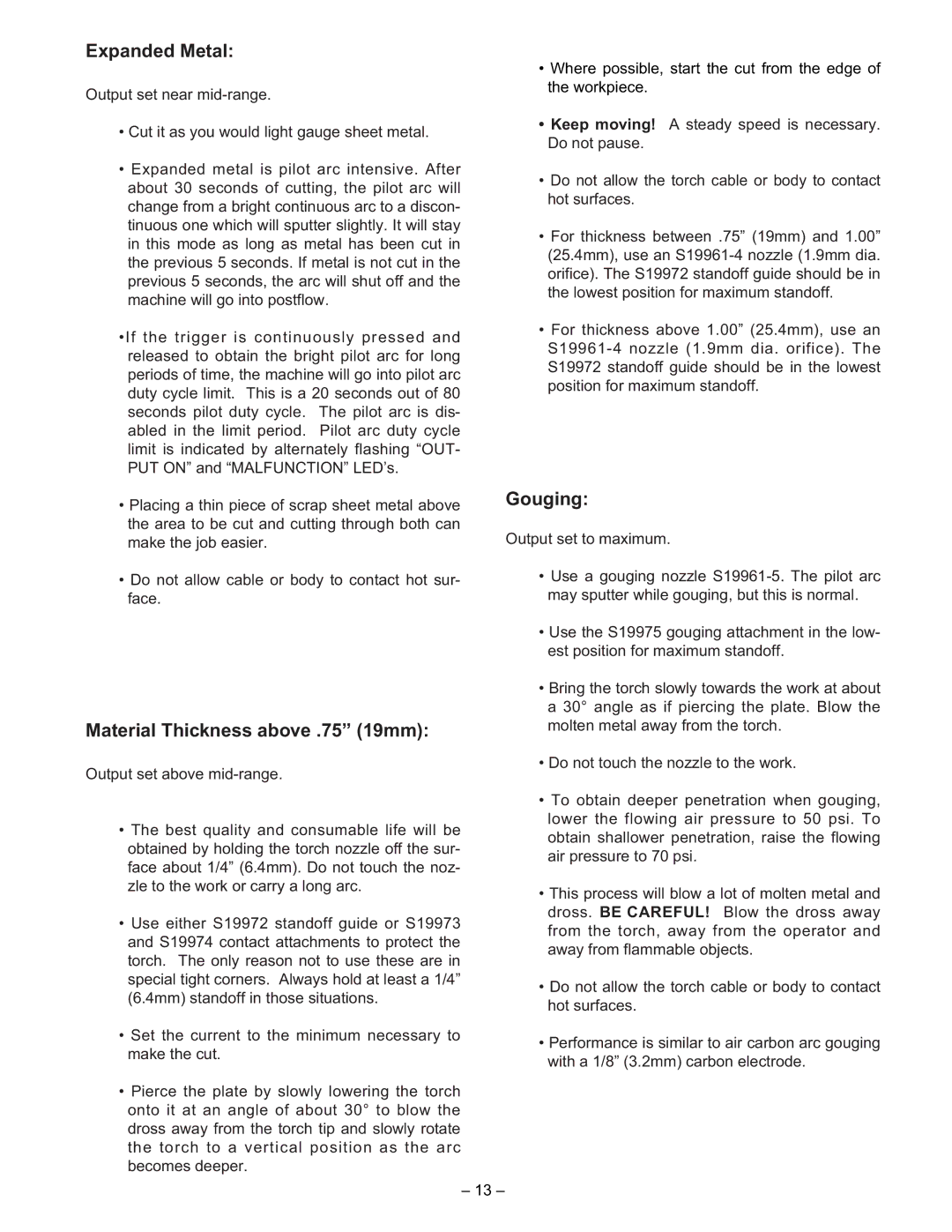Expanded Metal:
Output set near
•Cut it as you would light gauge sheet metal.
•Expanded metal is pilot arc intensive. After about 30 seconds of cutting, the pilot arc will change from a bright continuous arc to a discon- tinuous one which will sputter slightly. It will stay in this mode as long as metal has been cut in the previous 5 seconds. If metal is not cut in the previous 5 seconds, the arc will shut off and the machine will go into postflow.
•If the trigger is continuously pressed and released to obtain the bright pilot arc for long periods of time, the machine will go into pilot arc duty cycle limit. This is a 20 seconds out of 80 seconds pilot duty cycle. The pilot arc is dis- abled in the limit period. Pilot arc duty cycle limit is indicated by alternately flashing “OUT- PUT ON” and “MALFUNCTION” LED’s.
•Where possible, start the cut from the edge of the workpiece.
•Keep moving! A steady speed is necessary. Do not pause.
•Do not allow the torch cable or body to contact hot surfaces.
•For thickness between .75” (19mm) and 1.00” (25.4mm), use an
•For thickness above 1.00” (25.4mm), use an
•Placing a thin piece of scrap sheet metal above the area to be cut and cutting through both can make the job easier.
•Do not allow cable or body to contact hot sur- face.
Material Thickness above .75” (19mm):
Output set above
•The best quality and consumable life will be obtained by holding the torch nozzle off the sur- face about 1/4” (6.4mm). Do not touch the noz- zle to the work or carry a long arc.
•Use either S19972 standoff guide or S19973 and S19974 contact attachments to protect the torch. The only reason not to use these are in special tight corners. Always hold at least a 1/4” (6.4mm) standoff in those situations.
•Set the current to the minimum necessary to make the cut.
•Pierce the plate by slowly lowering the torch onto it at an angle of about 30° to blow the dross away from the torch tip and slowly rotate the torch to a vertical position as the arc becomes deeper.
Gouging:
Output set to maximum.
•Use a gouging nozzle
•Use the S19975 gouging attachment in the low- est position for maximum standoff.
•Bring the torch slowly towards the work at about a 30° angle as if piercing the plate. Blow the molten metal away from the torch.
•Do not touch the nozzle to the work.
•To obtain deeper penetration when gouging, lower the flowing air pressure to 50 psi. To obtain shallower penetration, raise the flowing air pressure to 70 psi.
•This process will blow a lot of molten metal and dross. BE CAREFUL! Blow the dross away from the torch, away from the operator and away from flammable objects.
•Do not allow the torch cable or body to contact hot surfaces.
•Performance is similar to air carbon arc gouging with a 1/8” (3.2mm) carbon electrode.
– 13 –
